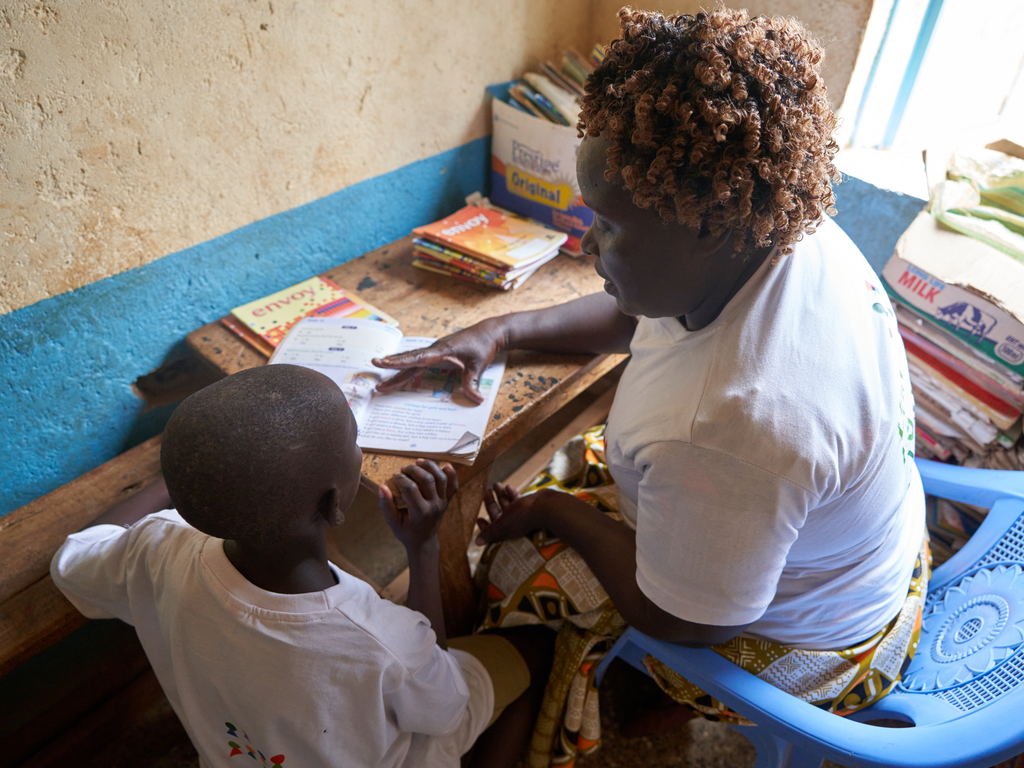
Shocking stats that reveal the full horror of life for children in war-torn Yemen
Child marriage, Children in conflicts, Education in emergencies, Refugees and internally displaced people, Safe schools, Teachers and learning
The UN's humanitarian agency OCHA has painted a bleak picture after its chief Mark Lowcock visited the country and heard "stories of atrocious suffering".
The full extent of the suffering being endured by many of Yemen’s children has been revealed by the United Nations.
Bombed, displaced, malnourished, sick, married off young and with no schools to go to.
That’s the bleak picture painted by the latest bulletin on the war-torn country from OCHA (UN Office for the Coordination of Humanitarian Affairs).
It comes days after a trip to Yemen by Mark Lowcock, the UN’s Under-Secretary-General for Humanitarian Affairs and Emergency Relief Coordinator.
He said: “It has been shocking to see the terrible impact of this man-made conflict. I have met hundreds of Yemenis and listened to their stories of atrocious suffering.”
Theirworld reported last month on fears for the future of 4.5 million schoolchildren because of the combination of attacks on schools, hunger and a strike by teachers who haven’t been paid in months.
This horrendous suffering must end. People in #Yemen are living through the world’s worst hunger crisis & cholera outbreak. pic.twitter.com/WTv4OSG2Xq
— UN Humanitarian (@UNOCHA) November 4, 2017
We told how the strike has seen education grind to a halt in areas controlled by the Iran-backed Huthi rebels, three years into their war with the government backed by Saudi Arabia. More than 13,000 schools, or 78% of all of Yemen’s schools, were unable to open on the first day of term.
Now OCHA’s report has revealed more depressing statistics about life for Yemen’s children, claiming 1600 schools have been destroyed or partially damaged due to airstrikes or shelling.
It says that:
- 11.3 million children need humanitarian assistance.
- 13% of casualties in the conflict are children. In August and September, at least 31 children were reported killed (20 boys, 11 girls) and 28 maimed (20 boys, eight girls).
- At least 147 schools are hosting IDPs (internally displaced persons) and 23 are occupied by armed groups.
- Every 10 minutes, a child dies of preventable causes such as malnutrition, diarrhoea and respiratory infections.
- Of 2.9 million Yemenis who have been displaced from their homes since the conflict escalated in 2015, 55% are children (28% boys and 27% girls).
- Of the 870,000 suspected cases of cholera reported since April, 27% are children under the age of five.
- Half of children under five have stunted growth, 1.8 million children are affected by moderate acute malnutrition and 386,000 suffer from severe acute malnutrition.
- Even if the fighting stopped today, stunted growth and delayed cognitive development will linger for an entire generation.
- An estimated 72% of girls are being married off before they turn 18 – an increase of 22% since the conflict escalated.
Despite all of this, OCHA points out that some progress is being made.
Among other interventions, 1.4 million children have been supported through the rehabilitation of schools and provision of school materials.
Nearly 500,000 children have benefitted from psycho-social support to cope with the trauma of living through the conflict.
After his five-day mission, Lowcock said more funding and better humanitarian access is still needed to help Yemen’s people.
He met Prime Minister Ahmed Obeid bin Dagher and also asked for teachers to be paid their salaries and for humanitarian agencies to be allowed to do their work unhindered.
Lowcock added: “In the absence of substantial progress on all these points, the already dire situation will continue to deteriorate. The human suffering, already extreme, will grow and grow.”
Last month Yemen became the 70th country to sign the Safe Schools Declaration – a commitment to protect students, teachers, schools and universities from attack and take measures to stop the military use of education facilities.

More news

Take the test and discover how our Schools Hub helps students grasp the global education crisis
